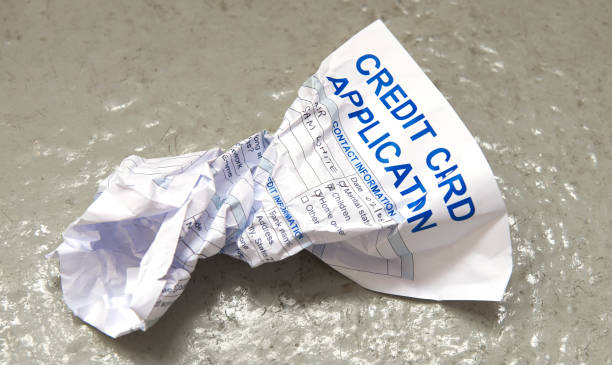 The relationship between overextended personal debt and credit score damage is a profound and destructive feedback loop, each fueling the other in a cycle that can feel inescapable. A credit score is a numerical representation of financial trustworthiness, and nothing erodes that trust faster than an inability to manage debt. When monthly obligations surpass a sustainable level, the first casualty is almost always the timely payment history that forms the foundation of a good score. A single missed payment can trigger a drastic drop, alerting future lenders to heightened risk. Furthermore, as balances climb, so does the credit utilization ratio—the amount of available credit being used. This ratio is the second most critical factor in score calculations, and when it spirals above the recommended 30%, it signals desperation and financial instability, further depressing the number.The damage inflicted extends far beyond a mere number. A low credit score is the price paid for overextension, locking individuals into a more expensive financial reality. It slams shut the doors to lower-interest refinancing options that could have provided a lifeline out of high-interest debt. Instead, those with damaged scores are forced to remain in costly cycles of credit card debt or seek out predatory loans with exorbitant rates, which only deepens the original problem. This creates a punitive cycle where the cost of borrowing increases precisely when one can least afford it, making the path to solvency steeper and longer.However, this damaging link also contains the blueprint for recovery. The very actions necessary to overcome overextended debt are the same ones that will diligently repair a battered credit score. A steadfast commitment to on-time payments, even if only the minimum, begins to rebuild a positive payment history. Strategically allocating any extra funds to reduce revolving balances directly lowers the crippling utilization rate, often resulting in a quick and noticeable score improvement. This process transforms debt management from a purely defensive struggle into a proactive campaign of financial rehabilitation. Each payment becomes an investment not just in becoming debt-free, but in rebuilding one’s financial reputation and future opportunities. Thus, while overextension and score damage are intimately connected in cause, they are equally connected in cure, offering a path from crisis back to credibility.
The relationship between overextended personal debt and credit score damage is a profound and destructive feedback loop, each fueling the other in a cycle that can feel inescapable. A credit score is a numerical representation of financial trustworthiness, and nothing erodes that trust faster than an inability to manage debt. When monthly obligations surpass a sustainable level, the first casualty is almost always the timely payment history that forms the foundation of a good score. A single missed payment can trigger a drastic drop, alerting future lenders to heightened risk. Furthermore, as balances climb, so does the credit utilization ratio—the amount of available credit being used. This ratio is the second most critical factor in score calculations, and when it spirals above the recommended 30%, it signals desperation and financial instability, further depressing the number.The damage inflicted extends far beyond a mere number. A low credit score is the price paid for overextension, locking individuals into a more expensive financial reality. It slams shut the doors to lower-interest refinancing options that could have provided a lifeline out of high-interest debt. Instead, those with damaged scores are forced to remain in costly cycles of credit card debt or seek out predatory loans with exorbitant rates, which only deepens the original problem. This creates a punitive cycle where the cost of borrowing increases precisely when one can least afford it, making the path to solvency steeper and longer.However, this damaging link also contains the blueprint for recovery. The very actions necessary to overcome overextended debt are the same ones that will diligently repair a battered credit score. A steadfast commitment to on-time payments, even if only the minimum, begins to rebuild a positive payment history. Strategically allocating any extra funds to reduce revolving balances directly lowers the crippling utilization rate, often resulting in a quick and noticeable score improvement. This process transforms debt management from a purely defensive struggle into a proactive campaign of financial rehabilitation. Each payment becomes an investment not just in becoming debt-free, but in rebuilding one’s financial reputation and future opportunities. Thus, while overextension and score damage are intimately connected in cause, they are equally connected in cure, offering a path from crisis back to credibility.
A new credit card increases your total available credit. If your balances remain the same, this instantly lowers your overall credit utilization ratio, which is a key factor in your credit score. However, this only works if you avoid using the new card for purchases.
Settling will change the account status to "settled," which is better than an unpaid collection but still a negative mark. It does not remove the history of late payments that led to the settlement.
Student loan debt is often large and non-dischargeable in bankruptcy. When graduates face underemployment or low wages, their debt-to-income ratio can become unsustainable, delaying other financial goals like home ownership or retirement savings.
Yes. Lax regulations allow for high-interest rates, excessive fees, and confusing loan terms that consumers may not fully understand, creating an environment where risky and predatory lending can thrive, directly contributing to debt crises.
While the calculation itself doesn't prioritize, the result clarifies the magnitude of the problem. This big-picture view can motivate you to adopt aggressive payoff strategies like the debt avalanche method, which saves the most money on interest and improves net worth fastest.